How often should a billion-dollar legacy retail brand upgrade their online ecommerce infrastructure?
Gymboree, a 40+ year-old children’s clothing company with over 1,300 physical stores (under several brand names) has taken the all-too-familiar steps to initiate bankruptcy proceedings to restructure the company — news reports indicates that 300–400 stores will close under the restructuring.
It’s clear based on this physical retail restructuring that the company is making tough decisions about in-person retail, but it’s unclear if the same focus and attention is being paid to their ecommerce tech and website, and how it all connects to their in-store tech and other modern marketing channels.
I wanted to take a quick look at the technology that has powered the Gymboree websites since the first versions of it started to get picked up by the Internet Archive in August 1999. So without further ado… my Monday morning quarterbacking on ecommerce decisions that were being made while I was still a Sophomore in High School.
August 1999… the start of Gymboree.com and challenging ecommerce decisions…
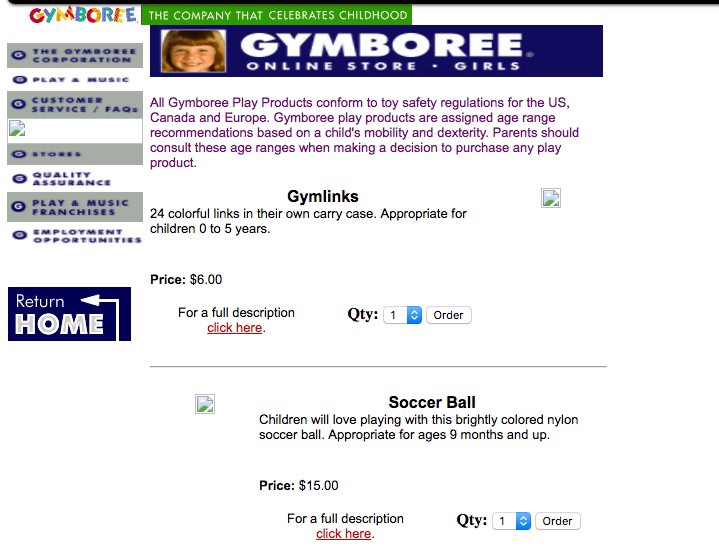
According to the Way Back Machine, in August 1999, Gymboree.com was built with the ecommerce software called, “iCat Electronic Commerce Suite 3.0.1” — if you are like me and have NO clue what that is, i’ll save you some Googling: iCat received the PC Magazine Editor’s Choice for ecommerce tools in November 1997. In a still-active blog post from October 1, 1998, Anthony Leong gushed about iCat and it’s “ability to remotely-administer the site via a web browser” among other praise you could expect from modern ecommerce software that ran on Windows 95 and required 16MB of RAM and 60MB of hard drive space. (Drooool!!!) iCat was one of best ecommerce tools on the market and it was used by Hewlett-Packard on their online store — generally would be considered a good choice.
May-June 2000 seemed to be a rough couple months as their website served up 404 errors and then they eventually added this fun message to their homepage, “We’re sorry, Gymboree’s Online Store is going through a required software upgrade. Please check back with us again. Sorry for any inconvenience.” ((LOL @ ‘required software upgrade’))
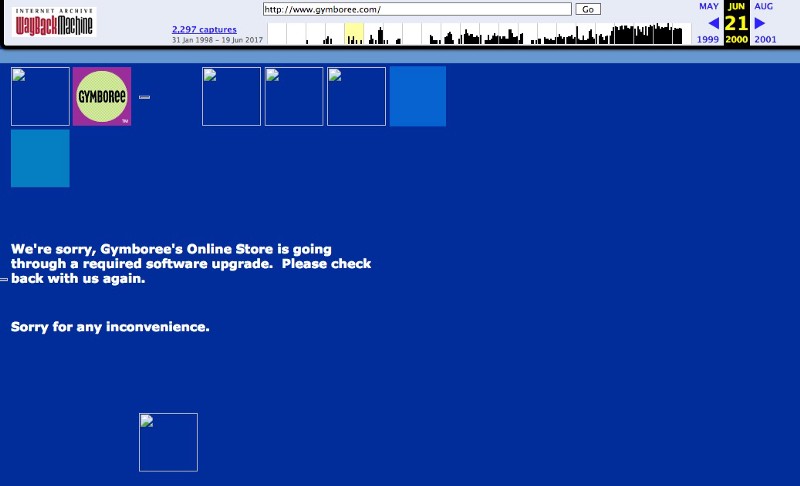
In November 2000, Gymboree finally had a fun modern homepage with a bunch of rollover images.</snark>The internal pages and shop pages don’t seem to be archived, so it’s unclear what ecommerce software they were using.
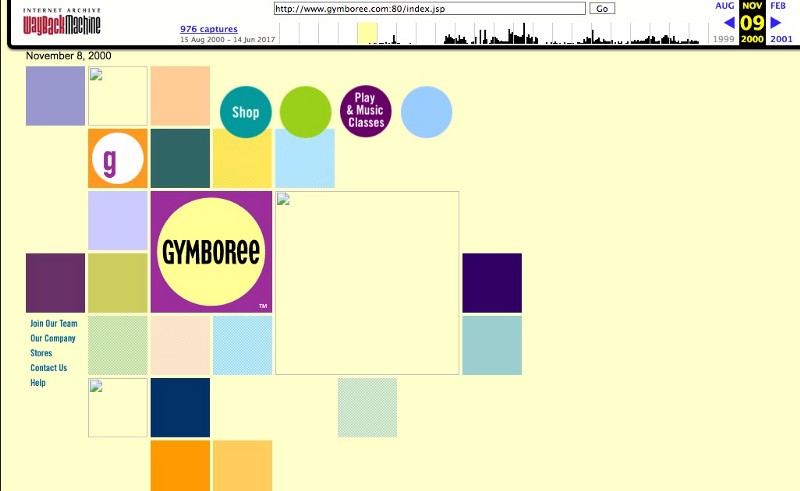
From 2000–2004, the Way Back Machine mostly got errors due to a cookie requirement. On a couple occasions the WBM was able to archive the homepage but it was an error page — here’s one from October 15, 2002:
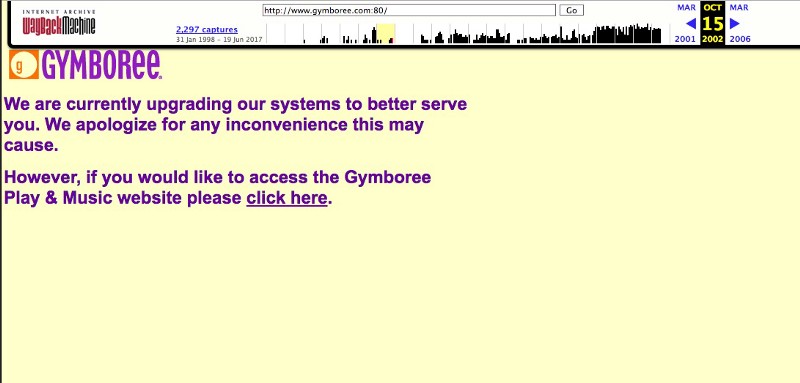
In 2004, the Way Back Machine was finally able to archive the Gymboree homepage with ecommerce code on it — Here’s one page from August 22, 2004 — this is the first time to see shopping variables from the ecommerce software company Borderfree.com.

In 2008 a few versions showed up like the image below — and more cached versions of pages started to show up that had code from the ecommerce software company Borderfree.com.
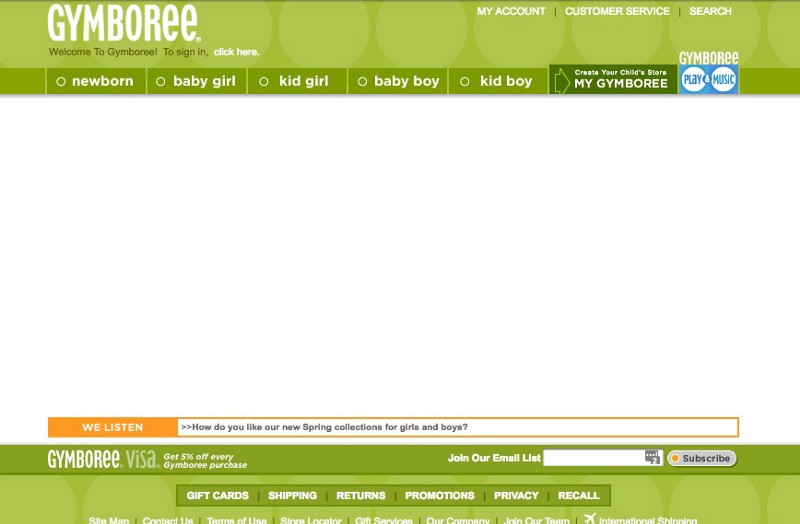
Borderfree.com is an ecommerce company founded in 1999. They previously described themselves as supporting international ecommerce, and they have a variety of U.S. clothing/fashion clients. In June 2015, Pitney Bowes acquired Borderfree and integrated it into their marketing stack, while also keeping the Borderfree.com website actively updated.
I had never heard of Borderfree before starting this research, but it’s apparently ecommerce software used by over 200 brands — and based on a cursory search, it appears their current clients include struggling retailer J Crew (which is currently being ‘saved’ from bankruptcy proceedings by GSO Capital Partners), struggling retailer Kohls, and a variety of fashion houses and shoe brands. I won’t get too critical of Borderfree without spending more time on it, but I’m not terribly impressed with what I’m seeing and a couple of the clients prominently listed on the Borderfree website use Magento now….
but back to the analysis of Gymboree…
From 2008–2010 there were a lot of broken versions of Gymboree.com due to their dynamic ASP pages and cookie redirects, but in October 2011 they finally had a clean and modern homepage cached properly — and they were still running the ecommerce software Borderfree:

…and drum roll…flash forward to June 2017…
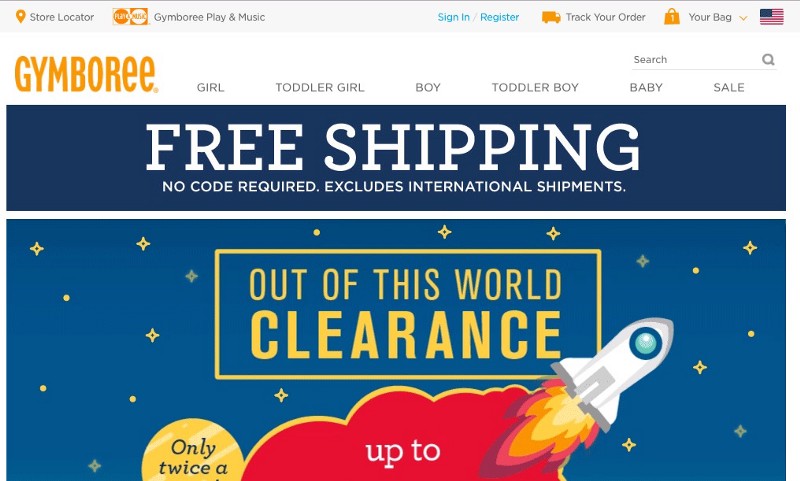
As of June 2017, Borderfree is the ecommerce software that Gymboree.com continues to use on their website and on all their sister websites.
….Gymboree has used the same ecommerce software on their website for over 13 years…
When I finally worked my way through all these years and saw the lack of any changes in Gymboree’s ecommerce software, I was honestly shocked. I didn’t spoil it for myself by checking out the current version until I got to it, so as I went year by year, I kept on thinking…expecting… hoping… they would make some change. But they didn’t.
This isn’t an indictment in Borderfree — obviously they have been a successful market-leader in ecommerce software for over 18 years. My ignorance of their work shouldn’t indicate a lack of value there.
But it’s shocking to me that a retail brand hasn’t had a need/desire/effort to change their ecommerce software in 13 years. Maybe they tried and failed? maybe they decided they didn’t need to change?… but then as I explored their website I saw that there isn’t any option to “Register with Facebook/Twitter/Google” (only email) and when making a purchase, there isn’t an option to pay with PayPal, or with Amazon payments, or Apple Pay — only a credit card option and a Visa checkout option (apparently they retired the checkout option from 2008 to sign up for a Gymboree Visa card).
This got me thinking… How many legacy retailers have used the same ecommerce software for more than 10 years? More than 13 years? More than 15 years? How many billion dollar brands have been unable or unwilling to migrate into more modern and massively-supported ecommerce infrastructures like Shopify or Magento? What are the pros and cons of a decision like this, and how can a massive company ever consider such a migration for their online store? How frequent does a legacy retail brand need to audit their ecommerce and technology decision making and infrastructure?
At this point, Gymboree has larger problems than their ecommerce software, and the former CEO Of Continental Airlines, Gordon Bethune, put it best: “A bankruptcy judge can fix your balance sheet, but he cannot fix your company.”
—
Think this analysis is awful? Know of any awesome legacy-retail-ecommerce-migration case studies? Send studies & complaints on twitter @thezedwards — Want to work together on something? zachedwards@victorymedium.com


Recent Comments